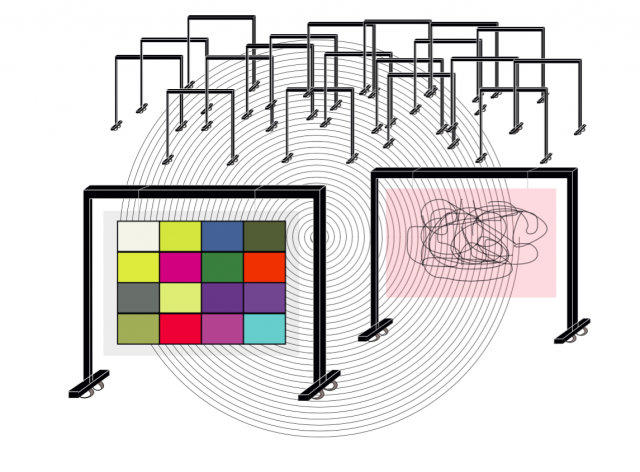displays - franck leibovici

on displays
as soon as they work with pre-existing documents (still or moving image, texts or sound), poets and artists, curators and scenographers, graphic designers and exhibition architects, always find on their path the question of display. because a work of art is defined through its showing conditions, through its methods of publicization: a work is never perceived without a point of view or out of any point of view. no artwork but through sites... as well as for the "white cube": a white room, an empty space, a pedestal, separation spaces, 40 lux lighting. in fact, the same question is found in many other disciplines, since scientists too must invent image-processing techniques, as well as police officers, doctors, and so on.
in the late 90s, poet christophe hanna had published a poster entitled "our organs are our theories". the formula could be applied here: "our displays are our theories", because each display encapsulates a theoretical model. as soon as we look more closely, the displays contradict the modernist conception of an independent work of art, to which informative documents would be added. because each display carries with it the question of mediation. and if a document is not only a support for information, but is a script, a score containing actors and actions to be activated, to be performed, then we must necessarily change the way we think about what an exhibition is, and thereon, change its parameters and formats.
"performing documents" implies immediately placing oneself in relation to action, in relation to exercise, to repeated training, and an exhibition is then no longer either a place of celebration of stabilized artifacts or a place where documents are displayed under cases (in line with the expected format that many documentary and archival exhibitions take). the exhibition becomes, on the contrary, a place where one trains oneself to activate new ecologies obtained by the composition of the assembled works and documents. these exhibitions could be called exhibition-trainings, in which the display takes the place of weight training benches or yoga mats. this also implies that these displays can inhabit different forms, including that of a book, or a manual.
the concept developed here aims to "disobjectify" artworks, or rather to revive what is meant by "object" by reassembling the latter with elements that were considered as being external to it, by once again highlighting relations that are essential to its operation but which have been removed from the base of the sculpture to have you believe that the sculpture spoke for itself.
a display is ultimately only a way to perform the mediation and relationships contained in an artwork, a way to actualize the potentialities of the latter. in this, the display is an extension of the exhibited work and this extension still carries a body of people necessary for its production and its maintenance, ie, a collective.
franck leibovici
Share